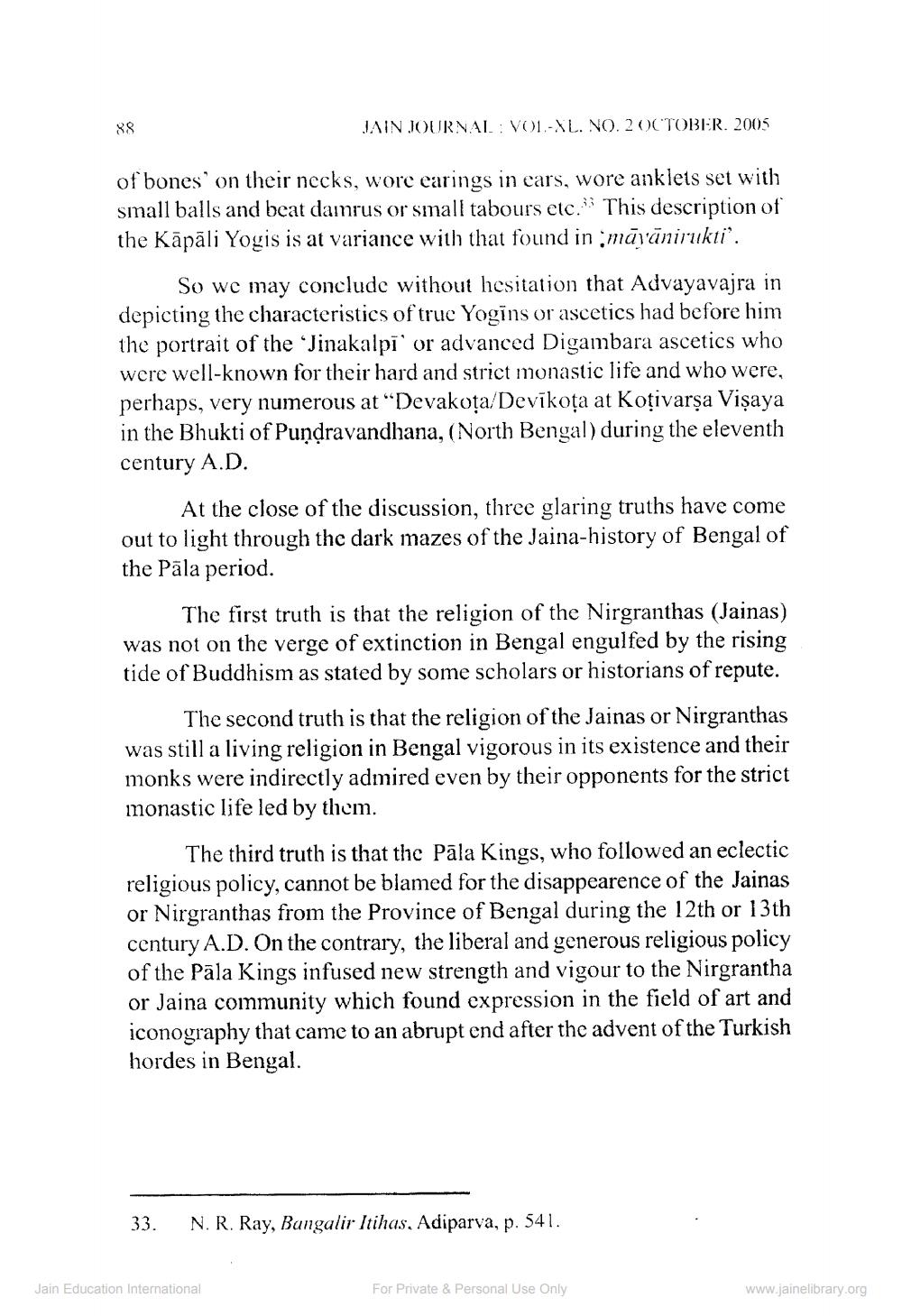________________
88
JAIN JOURNAL : VOL-XL. NO. 2 OCTOBER 2005
of bones' on their necks, wore earings in cars, wore anklets set with small balls and beat damrus or small tabours etc. This description of the Kāpāli Yogis is at variance with that found inimāvānirukti'.
So we may conclude without hesitation that Advayavajra in depicting the characteristics of truc Yogins or ascetics had before him the portrait of the 'Jinakalpi' or advanced Digambara ascetics who were well-known for their hard and strict monastic life and who were, perhaps, very numerous at “Devakoța/Devīkota at Koțivarşa Vișaya in the Bhukti of Pundravandhana, (North Bengal) during the eleventh century A.D.
At the close of the discussion, three glaring truths have come out to light through the dark mazes of the Jaina-history of Bengal of the Pāla period.
The first truth is that the religion of the Nirgranthas (Jainas) was not on the verge of extinction in Bengal engulfed by the rising tide of Buddhism as stated by some scholars or historians of repute.
The second truth is that the religion of the Jainas or Nirgranthas was still a living religion in Bengal vigorous in its existence and their monks were indirectly admired even by their opponents for the strict monastic life led by them.
The third truth is that the Pāla Kings, who followed an eclectic religious policy, cannot be blamed for the disappearence of the Jainas or Nirgranthas from the Province of Bengal during the 12th or 13th century A.D. On the contrary, the liberal and generous religious policy of the Pāla Kings infused new strength and vigour to the Nirgrantha or Jaina community which found expression in the field of art and iconography that came to an abrupt end after the advent of the Turkish hordes in Bengal
33.
N. R. Ray, Bangalir Itihas, Adiparva, p. 541.
Jain Education International
For Private & Personal Use Only
www.jainelibrary.org




